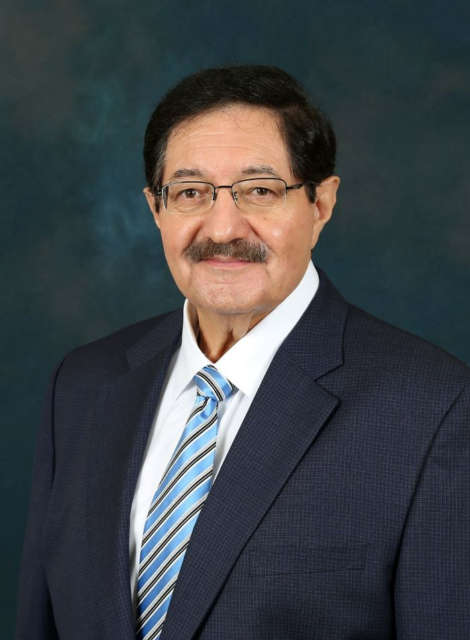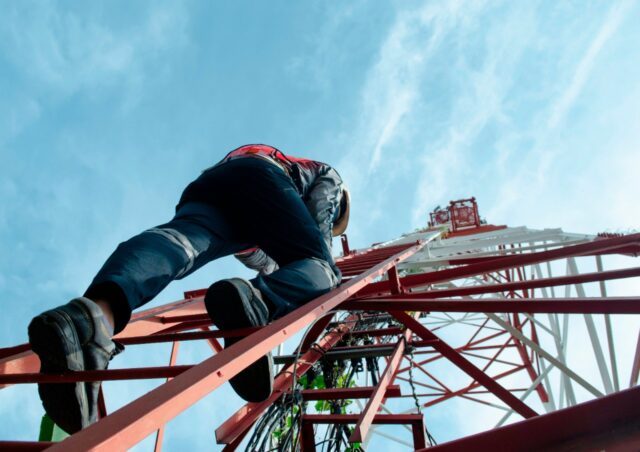Internet access can feel like a no-brainer: As long as you pay a bill to your internet provider each month, you don’t have to worry about being able to log on whenever you like. But for many, access to the World Wide Web is much more complicated. According to the FCC, approximately 19 million Americans don’t have access to broadband internet, and in rural areas of the country, one-fourth of the population can’t get online.
Two organizations are coming together to advocate for solutions to the broadband access issue—the League of United Latin American Citizens (LULAC) and SER (Service, Employment and Redevelopment) National. Dell Perspectives spoke with Ignacio Salazar, the president and CEO of SER, about how lack of broadband access can affect rural populations, the unique effect this has on Hispanic and Latino communities, and what infrastructure is needed to ensure that universal access becomes the norm rather than the exception to the rule.
How did the relationship between SER and LULAC come about? How has the partnership evolved since both organizations started working together?
LULAC has been a champion for minority communities since 1929, with a specific focus on education, civil rights and employment opportunities for Hispanic and Latino communities. In 1964, members of LULAC, the American GI Forum, the U.S. Navy and the Department of Labor created a partnership called Operation SER that focused on service, employment and redevelopment. The standalone organization opened its first office in Texas the following year.
Today, SER works in conjunction with LULAC on initiatives that improve the quality of life for all people, but specifically the Hispanic and Latino community, where we focus on workforce development, education and economic opportunity for people of all ages.

Can you explain the difference between broadband and WiFi, or wireless access?
When we refer to broadband, what we’re talking about is the infrastructure put in place that transmits signals via cable or fiber optics to bring high-speed internet into people’s homes. Many users have WiFi in their homes that connects to their phones and allows them to move around and still have internet access, but that’s a radio frequency that stems from a router that’s been installed. You can’t have WiFi without the original broadband connection.
How does 5G factor into this picture?
5G is the future, it’s definitely where we’re headed. “5G” is the fifth generation of wireless technology that’s built upon an existing broadband network, but this technology is 100 times faster than 4G. It’s a down-the-line solution to the broadband issue: Not only will implementing 5G allow for faster download speeds, quicker responsiveness and more bandwidth, it will also support the Internet of Things and connect products and services we use every day more seamlessly.
What are the obstacles to facilitating broadband access in rural or remote areas?
There has been difficulty in expanding broadband to the more rural areas of the U.S for a number of reasons. One is the different kinds of terrain that can be found in these areas that make it physically difficult for the wires to be laid to reach more remote communities. As a country, we’ve prioritized urban areas that have larger populations. You also have to take into account the cost involved to lay cable, build antennas and signal towers, and keep that equipment maintained. In addition, 5G runs into the same kinds of issues moving forward in terms of not being able to resolve rural America’s problems because it’s a costly endeavor.
Studies show that 31% of Latino communities do not have access to broadband. How would increasing this utility help further the goal of upward mobility for this population specifically?
I’ll give you an example: Latinos and Hispanic students make up 53% of the student body in Texas public schools. Yet, two-thirds of Hispanics don’t have access to wireless internet because of the affordability factor. So these students are limited in the kind of information that they’re accessing, if they can access it at all. If we’re not exposing our children at a very young age to the world via connectivity, they’re not going to be able to take advantage of all of the education and preparation that the internet has to offer, which limits their ability to be productive citizens.
In particular, Hispanics are overly dependent on cell phones and mobile devices as a way to get online. Without access to broadband, these families don’t have the option of having multiple devices that can reliably get online so that they can make decisions about how to stay connected.
If you ask any city what a critical element for economic growth and development is, connectivity is at the top. And there’s a massive digital divide where there are large segments of the population that are Hispanic or Latino that don’t have connectivity the way that they need it.
SER works with corporate sponsors, including many in the telecom industry, to further its goals. How have your relationships with NCTA, CISCO, AT&T and Verizon helped to increase access to broadband across America?
We partner with many corporations, and our objective is to work with them to roll out programs that benefit underserved communities in America. For example, Comcast has a program called Internet Essentials that provides high-speed internet access at a low cost to qualifying households. Our task is to make sure that the public knows that this is something that they can participate in. Through SER’s network and relationship with these companies, we can ensure that the word gets out to the right people so that they can take advantage of these opportunities.
As we move forward in our relationships with these sponsors, we make sure that they’re aware of the challenges we see on the ground, and we push them to come up with ways to address those challenges that we can then use our networks to promote and put in front of the people that they will benefit most.
Universal [internet] access would put everyone on an equal playing field. There are enough inequities that exist in this county, and lack of internet access only exacerbates the issues that affect those that live in rural communities, especially people of color.
—Ignacio Salazar, president and CEO of SER
What steps do SER and LULAC recommend to forge a path towards universal access? Are there programs in place to make this utility available to everyone?
The continuation of the Emergency Broadband Benefit program is critical; this FCC program provides a monthly $50-75 discount on broadband services for qualifying households, and it’s important that we maintain this offering so that we can continue to connect rural and low-income families to the internet. There are also provisions in the upcoming federal infrastructure bill that would allocate $40 billion to improve broadband access in rural areas and make broadband more affordable overall for lower-income households.
Why is universal access to broadband internet necessary?
Universal access would put everyone on an equal playing field. There are enough inequities that exist in this county, and lack of internet access only exacerbates the issues that affect those that live in rural communities, especially people of color. When you can’t get online, you miss out on information, you miss out on education opportunities, work opportunities and so on.
It’s [SER’s] job to educate people and connect them to these programs they can participate in and to work with our corporate partners to make sure that these initiatives are being made available to as many communities as possible. It’s our responsibility to help promote and get these opportunities into the public’s hands so that they can take advantage of what this kind of connectivity has to offer.

